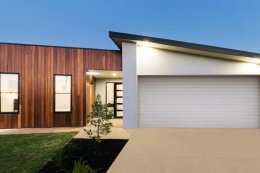
Despite all the talk of interest rates in recent months, almost one-fifth of homeowners aren’t even aware of what type of interest rate they’re on.
A recent survey by Compare the Market revealed 18.8% of current homeowners are ‘not sure’ if their home loan interest rate is fixed or variable.1
The same amount (18.8%) said they had a split-rate mortgage; 27.1% said they had a fixed-rate home loan; and variable rates were the most popular at 35.3% of responses.
The greatest concentration of borrowers who aren’t aware of their home loan rate type are older borrowers, with more than 74% those aged 65 and above saying they didn’t know their rate type, accounting for 60% of all those who didn’t.
Male borrowers meanwhile were more likely to be unaware of their rate type than women: 59% of borrowers who answered ‘not sure’ were men, compared to 41% being women.
In terms of state-vs-state rivalry, 26% of Queensland homeowners surveyed said they didn’t know their interest rate type, with Tasmania coming in second at 20%.
Thankfully, these findings mean over 80% of homeowners with a mortgage do know what type of interest rate they’re on, and the percentage of borrowers on variable, fixed and split-rate home loans is consistent with recent statistics.
Australian Bureau of Statistics (ABS) Lending Indicators data for September 2021 shows $29.8 billion worth of variable rate home loans (including refinancing) were funded in the month, compared to $24.6 billion for fixed home loans.2
According to ANZ Research, “nearly half of new borrowers now choose fixed mortgages, compared with around 15% prior to the pandemic”.3
Why is it important to know your home loan rate?
Compare the Market’s findings follow research from Mortgage Choice in January 2021, which only 46.5% of respondents knew their actual home loan interest rate (not the repayment type), down from as many as 71% in 2016.4
This is potentially concerning in a red-hot property market: in the 12 months to October 2021, median property prices increased by more than 21%,5 and the average home loan size has skyrocketed to more than $574,000.2
These factors are concerning when combined with a potential Reserve Bank (RBA) cash rate increase, although Governor Philip Lowe said yesterday that he still does not expect a change to made until 2023 at the earliest.6
“I would like to repeat a point I made a couple of weeks ago – that is, the latest data and forecasts do not warrant an increase in the cash rate in 2022.” Dr Lowe said.
“The economy and inflation would have to turn out very differently from our central scenario for the Board to consider an increase in interest rates next year.”
Still, individual lenders don’t need to wait for the RBA to increase their own interest rates, and there are already visible movements in both fixed and variable rate home loans across the market.
In just the two months from July to September 2021, the average interest rate on 3+ year fixed mortgages grew by 16 basis points,7 with ANZ predicting ‘sharp’ increases to fixed rates in the coming months.
While fixed rates are already moving up, variable rates are moving down, with major banks such as ANZ, NAB and Commonwealth Bank slashing numerous interest rates on variable home loan products.
Not knowing what type of interest rate you’re on or how much your interest rate is can result in mortgage repayments being much higher than they need to be.
Compare home loans with Compare the Market
Sources
Image via Shutterstock
- Data based on a survey of 510 property buyers and 510 property sellers carried out by PureProfile for Compare the Market.
- Australian Bureau of Statistics, 1 November 2021. Lending Indicators September 2021.
- ANZ Economic Insight, 8 November 2021. Mortgage rates heading higher, despite RBA.
- Mortgage Choice, January 2021. ‘Study reveals: the price of home loan interest rate apathy’.
- CoreLogic Home Value Index, 1 November 2021.
- Reserve Bank of Australia, 16 November 2021. ‘Recent trends in inflation’.
- Reserve Bank of Australia, September 2021. Lenders’ Interest Rates.







